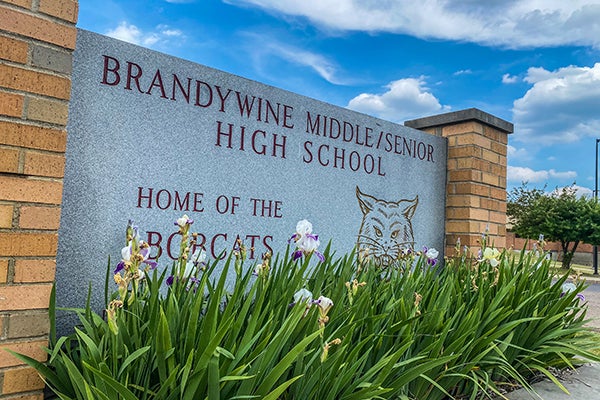Bonine House offers peek into African American history
Published 11:02 am Thursday, February 20, 2014

Cathy LaPointe and Mike Moroz stand in the foyer of the 19th century Bonine House. (Leader photo/JILL McCAUGHAN)
VANDALIA — Residents of Vandalia, Cassopolis, and the surrounding area are most likely well aware of the important role that the locale played in the history of the Underground Railroad. However, residents further afield, as well as newcomers to the area, may not be so familiar with the activities of the abolitionists that settled in Cass County.
Settled by Quakers, other abolitionists and Free African Americans, the Cass County countryside was so significant in the fight for freedom that Henry Clay, a senator from Kentucky, referred to the area as “that hotbed of abolitionism” on the floor of the U.S. Senate.
“This was a huge Underground Railroad district right around here in Vandalia, probably more than anywhere else in the country,” said Cathy LaPointe, treasurer of the Underground Railroad Society of Cass County (URSCC). “We not only have the Bonine House, but we also have the Carriage House right across the street, and there are many other important houses around here, too.”
The Bonine House, built by James E. Bonine and Sarah Ann Bogue Bonine in the mid 1840s, is the centerpiece of the URSCC’s efforts to revive interest and preserve the history of the Underground Railroad in Cass County. It is located at the corner of Penn Rd. and M-60 in Vandalia, MI.
The Bonines and their neighbors were critical figures in the fight for African American freedom, acting as station masters by hiding freedom seekers in their carriage house and in other nearby locations.
Purchased by the society in 2009, the Bonine House had almost fallen victim to time and the elements, but thanks to generous gifts from the society’s 350 members as well as various grants, the house is well on its way to becoming the museum and research site that society members dream of.
“It’s stabilized. We’ve really come a long way,” said Mike Moroz, president and chair of building and grounds for the URSCC. “Now, it’s mostly aesthetics from here on out.”
According to the URSCC’s website, located at www.urscc.org, their mission is “to provide a focal point for exploration into the origins and activities of the Underground Railroad; the unique role the people of Cass County and the surrounding region played throughout its existence, and how it impacted local, state and national history.”
While the Bonine House is currently closed for the season, it will reopen in April with free tours led by docents. July 12-13 will also provide an excellent time to visit the Bonine House, as those are the dates of their Underground Railroad Days celebration.
However, those who would like to celebrate African American History Month now can take advantage of copious materials available on the organization’s website.
Southwest Michigan residents and tourists can explore the history of the Underground Railroad in Cass County by viewing a video tour of the Bonine House. They can also retrace a driving tour of historic Underground Railroad sites that the society has assembled.
“We have a 14-site driving tour, self-guided, with all the Underground Railroad stops. It’s on our website, and they can download it,” LaPointe said. “Or, they can pick up a copy at Milo Barnes Park in Vandalia. That’s the first stop, and there are always brochures there.”
That tour includes many homes and farms as well as other sites that relate to the famous “Kentucky Raid” that took place in 1847. Slave catchers from that state followed freedom seekers to Cass County, attempting to recoup the slaveholders’ lost “property.” In fact, due to the outcome of this raid and subsequent court trials,
fugitive slave laws became much more stringent in the run-up to the Civil War.
The driving tour begins at the Under-ground Railroad State Marker/O’Dell’s Mill at M-60 and Milo Barnes Park in Vandalia, where a marker outlines Underground Railroad history from about 1837 to the beginning of the Civil War.
The significance of Cass County to the success of the Underground Railroad movement is only beginning to be understood. With the completion of the museum and research room at the Bonine House, that task will become much easier.
“They say there were about 1,500 freedom seekers who came through here,” LaPointe said. “Most of them were taken from here to Schoolcraft, and from there to Battle Creek by conductors. Most people who came through here went on to Canada.”
Others stayed and settled alongside many Free African American families in Ramptown, a community that James E. Bonine fostered on his own farmland.
Because of the historical significance of these many sites, Cass County is growing in popularity among those who appreciate cultural tourism.
“People come in from out of town to see the Bonine House or go to the history museum or the Log Cabin Museum, or all these things that are happening in downtown Cassopolis, and the Courthouse, too, and all of that is a part of what we’re trying to do,” Moroz said. “And, it brings outside dollars into the area.”





